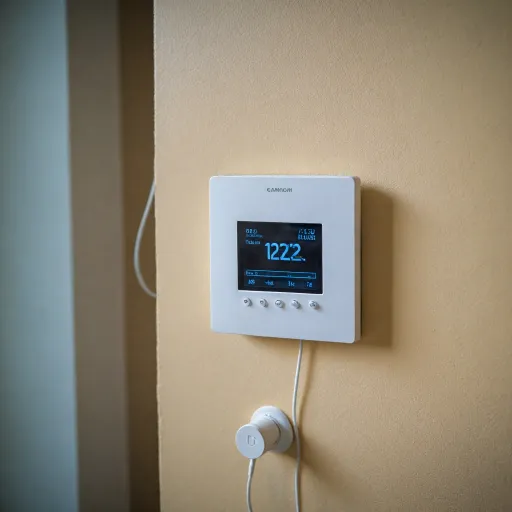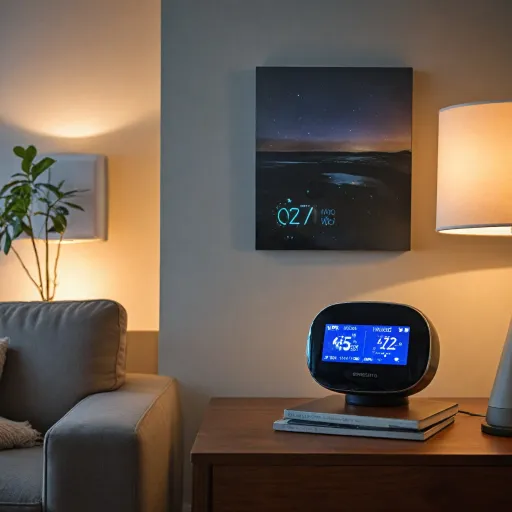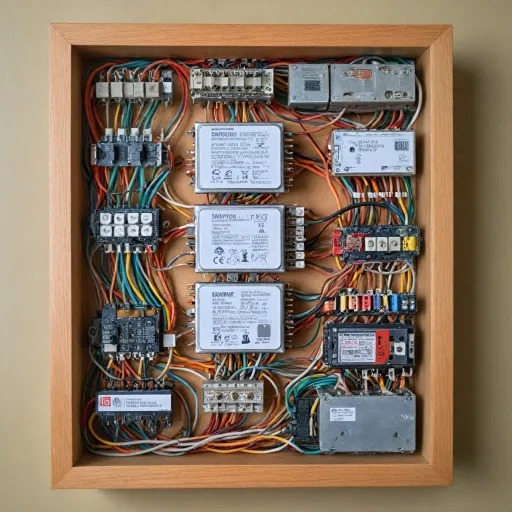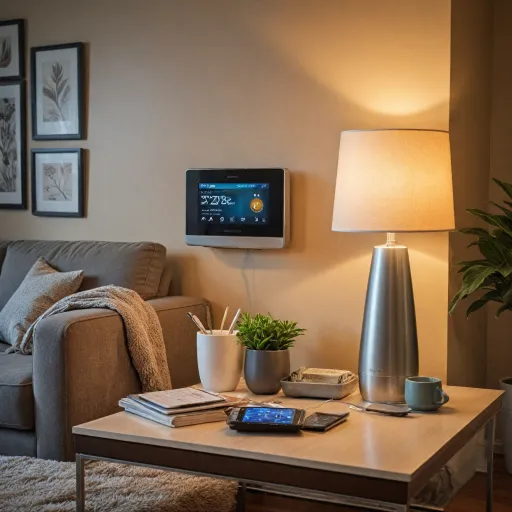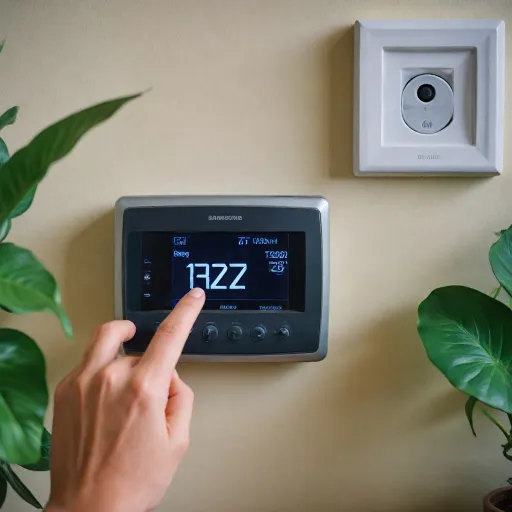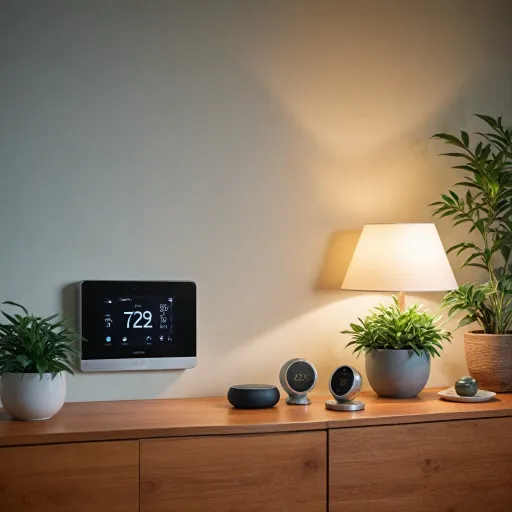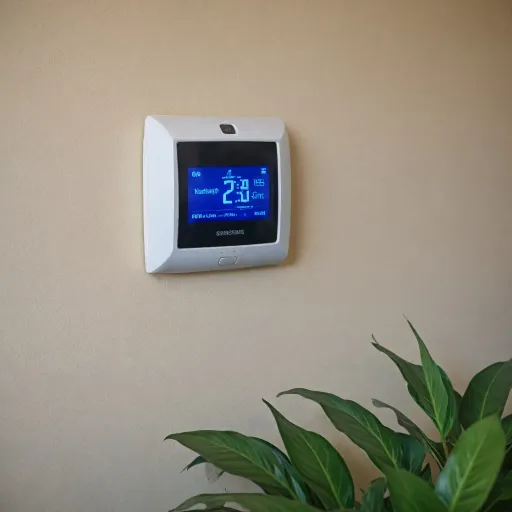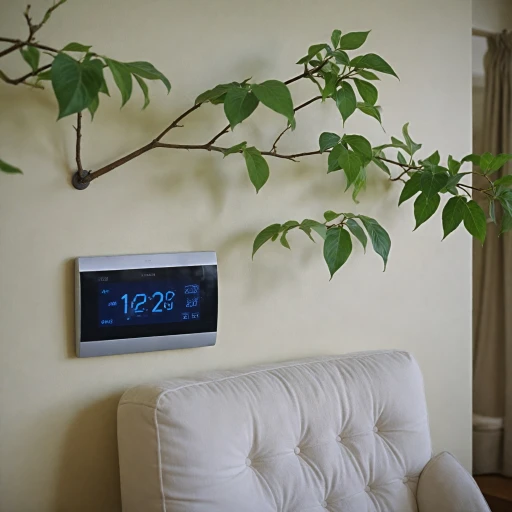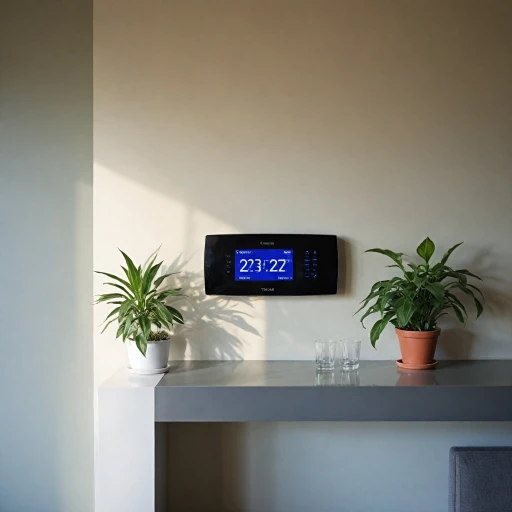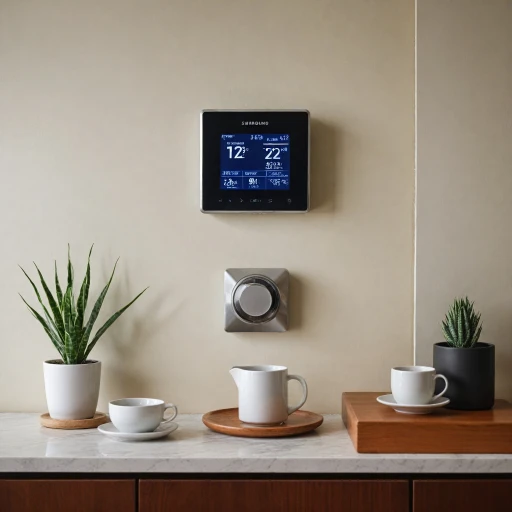
Understanding Energy Star Certification
The Fundamentals of Energy Star Certification
Understanding what it means for a thermostat to be Energy Star certified can help you make an informed decision when it comes to enhancing your home's energy management. Energy Star, a program established by the U.S. Environmental Protection Agency, is known for promoting energy efficiency and reducing greenhouse gas emissions. By opting for a product with this certification, you can be confident in its energy-saving features and performance. Energy Star certified smart thermostats are evaluated based on their energy efficiency, innovative features, and ability to help you save energy. These thermostats automatically adjust temperature settings to optimize heating and cooling while ensuring comfort, resulting in significant cost savings over time. The savings are not only monetary but also environmental, as they contribute to reducing the carbon footprint through efficient temperature control. If you're considering making the switch to a certified smart thermostat, you'll want to ensure that the product you choose stands up to rigorous standards set by the Energy Star program. Researching compatible models can aid you in selecting a system that works seamlessly with your current heating and cooling setup. For a deep dive into understanding the transition from traditional to energy-efficient options, check out this resource on making informed energy choices. By investing in an Energy Star certified smart thermostat, you not only make a smart choice for your wallet but also contribute to a sustainable future. This sets the stage for energy savings, enhanced control of your HVAC system, and improved overall user satisfaction—all covered extensively in subsequent sections of this article.Energy Savings and Cost Efficiency
Maximizing Savings with Smart Temperature Adjustments
Energy efficiency and cost savings go hand-in-hand with Energy Star certified smart thermostats. These advanced devices are designed to help you "save money and save energy" through smart temperature regulation strategies. A key feature that makes these thermostats stand out is their ability to automatically adjust temperature settings based on various factors, such as your daily schedule and weather patterns.
By mastering the art of temperature control, smart thermostat owners can experience noticeable savings on their utility bills. The U.S. gov website supports the notion that these savings are not just theoretical—they can provide a significant reduction in heating and cooling costs. Adjusting the temperature at different times of day and night can lead to savings of hundreds of dollars annually.
Exploiting the Star Certified Efficiency
Smart thermostats that carry the Energy Star label have passed rigorous testing to ensure they meet high standards of energy efficiency. This certification implies that the product is not only beneficial for your wallet but also plays a crucial role in reducing environmental impact, as discussed in other parts of this post. Investing in an Energy Star certified smart thermostat can often lead to quicker returns due to reduced expenses in maintaining the desired temperature in your home.
Enhanced Features for Optimal Performance
These thermostats come equipped with advanced features that assist homeowners in maximizing their HVAC system's efficiency. For instance, smart home integration capabilities enable seamless interaction with other connected devices, such as smart air conditioners. This compatibility ensures that your entire home system works harmoniously, optimizing heating and cooling efforts while delivering comfort.
Each thermostat model may offer unique saving features, such as detailed energy reports, helping you understand and control your energy consumption better. This information empowers users to make informed decisions aimed at decreasing unnecessary energy usage.
Environmental Impact
Environmental Impact: Choosing a Greener Approach
When it comes to reducing the environmental impact, opting for an Energy Star certified smart thermostat could be a significant step towards sustainability. With the increasing demand for energy, every small effort counts in conserving our planet's resources. Understanding the role of these devices in environmental conservation can change the way we perceive heating and cooling systems. Energy Star certified smart thermostats are designed to optimize temperature settings efficiently, thus reducing energy consumption across seasons. By minimizing unnecessary heating and cooling, these thermostats help conserve electricity and decrease the overall demand on energy resources. As a result, less fossil fuel needs to be burned for power, which in turn lowers greenhouse gas emissions. Adopting this technology doesn't just save energy; it also contributes to a significant reduction in carbon footprint, promoting a cleaner environment. In terms of energy saving, these thermostats automatically adjust temperature settings to suit the occupancy and preferences of the household. This fine-tuning can lead to measurable reductions in energy wastage. Moreover, Energy Star certified models offer a built-in system of tracking and reporting energy use. This feature not only helps users monitor their consumption patterns but also makes it easier to identify further opportunities for energy conservation. It empowers residents to make informed adjustments, maximizing efficiency and minimizing environmental harm. For those interested in exploring more about how these thermostats can revolutionize energy efficiency in homes, exploring the benefits of ThermaStor highlights additional features and advantages of embracing this technology.Smart Features and Connectivity
Innovative Capabilities and Seamless Integration
Energy Star certified smart thermostats come equipped with an array of smart features designed to enhance convenience and control over your home's temperature settings. These smart features not only help to maintain an optimal balance between comfort and energy savings but also allow for seamless integration with other smart home devices. By automatically adjusting the temperature based on your preferences and routines, these thermostats ensure that you save energy without compromising on comfort.
One of the standout features of smart thermostats is their connectivity, enabling users to control temperature remotely via smartphone or compatible smart home systems. This connectivity not only provides ease of use but also grants access to real-time energy usage data, which can be instrumental in identifying patterns that contribute to unnecessary energy consumption.
Moreover, many smart thermostat models can learn your daily schedule and habits. This learning capability allows them to automatically adjust temperature settings to save energy during periods when heating or cooling isn’t necessary. For instance, these thermostats can lower the heating when you're away at work or reduce air conditioning usage during the cooler parts of the day.
The product finder on the gov website can help users select the right thermostat for their HVAC system, ensuring compatibility and smooth operation. These factors are crucial for maximizing both energy savings and user satisfaction.
Additionally, some models offer integration with voice activated assistants, allowing users to control the thermostat simply by issuing voice commands. The fusion of these smart features provides homeowners with a comprehensive solution that is not only energy efficient but also incredibly user-friendly. As energy saving becomes more imperative, investing in a smart thermostat can be a step towards a more sustainable and convenient lifestyle.
Installation and Compatibility
Ensuring Compatibility and Streamlined Installation
Choosing an Energy Star certified smart thermostat is a step towards increased efficiency and savings, but compatibility and installation are essential factors to consider before purchasing. Compatibility with your existing heating and cooling system is vital. Most smart thermostats are compatible with standard HVAC systems, including multi-stage systems, heat pumps, and air conditioners. Before buying a product, verify that the thermostat will work seamlessly with your specific system. This information is usually detailed on the product packaging or on the manufacturer's website. The installation process for smart thermostats has become increasingly user-friendly, often designed for simple DIY setup. Many models provide step-by-step instructions or even companion apps to guide you through the process. However, professional installation is advisable if you're uncomfortable handling electrical wiring or if your system requirements are complex. Energy Star certified models often include features that help interface with other smart home devices, enhancing the overall functionality of your home’s environment. These smart features may include integrations with virtual assistants, home automation systems, or specific control applications, further aiding in energy saving by allowing fine-tuned control over the temperature settings. Consult the manufacturer's guidelines and resources available on the gov website to ensure that your chosen smart thermostat model meets your needs regarding installation and compatibility. Making informed decisions based on these considerations will help maximize the efficiency and benefits of your certified smart thermostat.User Experience and Satisfaction
Enhancing Comfort and Convenience
When it comes to user experience, smart thermostats truly shine by offering a seamless blend of comfort and convenience. These devices allow you to control temperature settings remotely, ensuring your home is always at the perfect temperature when you arrive. Whether you're adjusting the heating or cooling, the smart features of these thermostats make it easy to maintain a comfortable environment without any hassle.
Intuitive Interfaces and User-Friendly Apps
Most smart thermostat models come equipped with intuitive interfaces and user-friendly apps that simplify the process of managing your home's HVAC system. With just a few taps on your smartphone, you can adjust temperature settings, set schedules, and even receive energy-saving tips. This level of control not only enhances your comfort but also helps you save energy and reduce costs.
Learning Capabilities and Customization
One of the standout features of Energy Star certified smart thermostats is their ability to learn your preferences over time. By analyzing your daily routines and temperature preferences, these thermostats automatically adjust settings to optimize energy use and comfort. This learning capability ensures that your thermostat will always provide the ideal balance between energy saving and comfort.
Compatibility and Integration
Another important aspect of user experience is the compatibility of smart thermostats with various HVAC systems and smart home devices. Many models are designed to be compatible with a wide range of systems, making installation straightforward. Additionally, they often integrate seamlessly with other smart home products, allowing for a cohesive and efficient home automation experience.
Customer Satisfaction and Support
Customer satisfaction is a key indicator of a product's success, and smart thermostats generally receive high marks in this area. Users appreciate the energy savings, ease of use, and enhanced control these devices offer. Moreover, manufacturers often provide robust customer support and resources, such as product finders and gov website links, to help users maximize their thermostat's potential.



